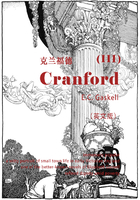DEVELOPING THE NEGOTIATION PLAN
Your negotiation plan is how you are going to go about achieving your prenegotiation objectives; it is your blueprint for the actual negotiation event. The quality of your plan directly affects how successful you'll be in the negotiation. Your agency may have a recommended template for a negotiation plan; most good plans will, at a minimum, cover these areas:
? Overall objectives
? Background information
? Team members
? Negotiation objectives
? Major issues
? Negotiation strategy
? Schedule and logistics.
OVERALL OBJECTIVES
The plan should start off by describing the overall objectives of the negotiation. What end are you seeking? A clear, concise objectives statement gives focus to the plan, provides a rallying point for the team, and provides a roadmap for the negotiation. Your statement should be a summary, at a high level, of your overall negotiation objectives e.g., dollars, contract type, financing terms. Your ultimate goal is to get best value at a fair and reasonable price to both parties.
BACKGROUND INFORMATION
Next, include brief background information related to the acquisition, the contractor, and the overall negotiating environment or situation. Most of this information will come from work you have already done—the acquisition plan, the solicitation documents, your market research, your prenegotiation objectives, and your research into the other party. Talk about the general market environment. Discuss the level and amount of competition. List the negotiators for the contractors, their job titles, the contractors' previous history with the government, and the like. Don't be verbose here; a good, brief summary will do.
TEAM MEMBERS
Here you list the names, positions, roles, and responsibilities of the members of your negotiation team. Indicate who will be your technical experts for issues, who will take the lead for each issue, and who will be your actors in carrying out strategy and tactics. Be sure to include a person to keep the minutes of the session. Don't forget to include possible alternate team members in your plan to cover contingencies such as absences. You may also use this section to state that all team members have been properly briefed on procurement integrity, limits on exchanges, limits on authority, nondisclosure of proprietary and source selection information, and ethics.
NEGOTIATION OBJECTIVES
This section states your specific negotiation objectives for each issue. Here, you'll lay out your prenegotiation positions (MIN/MAX/TGT) in priority order, issue by issue. For example, issue #1 will be your most important issue, and you will discuss it completely before moving to issue #2. (Remember to include both your must and your give points.) Keep in mind that you don't have to discuss the issues in this order during the negotiation. The strategy you choose will set the discussion priority.
Then list the contractor's anticipated positions on these issues, laying out the results of your team's technical evaluation of the contractor's proposal for each issue (e.g., strengths, weaknesses, deficiencies). Briefly summarize those positions and cross-reference them back to the technical evaluation report for more detailed information.
Next you'll want to write down your assessment of each side's relative bargaining power for each issue. Examples of bargaining power are level of competition, expertise and knowledge, time constraints, quality and skills of the negotiators, and risks. Writing down your assessment will help you understand how strong you are on each issue. You can even identify potential items within each issue that can be traded off. Price is always considered a tradeoff, but also look at other factors as potential tradeoffs, like delivery dates, FOB points, warranties, financing, and technical considerations.
Also think through and document some preplanned counteroffers for each issue. These should be small tradeoffs you have already considered and discussed with your team that do not detract from your overall position and are comfortably under your target (TGT) position. For instance, providing financing or receiving some technical benefit for a gizmo may not be all that important to you (your give points), but it may be very important to the other side. The ability to give up these things may enable you to receive concessions in return in areas you do care about.
MAJOR ISSUES
This section will highlight important factors that affect the entire negotiation. Include factors that apply to all issues, not just specific ones. Examples include major terms and conditions proposed by the contractors and areas where the government has encouraged the contractors to propose alternative ways of solving a particular problem (e.g., lease vs. purchase). Also discuss any unique aspects of your requirement, such as quality assurance requirements or higher level quality control requirements. List avoidance points (things you don't want anyone on your team to mention) in this section too.
NEGOTIATION STRATEGY
This section will lay out your overall plan to address the issues, conduct the negotiation, and control the negotiation process. Choosing the right strategy is a three-part process. First, you assess each side's bargaining power. Next, you establish your "best alternative to a negotiated agreement" (BATNA). Finally, you select the appropriate strategy based on your assessment of relative power.
Step 1. Assess Bargaining Power
As best you can, determine which side has the most power—the most negotiation leverage—going into the negotiation. Your answer will tell you which negotiation strategy to select. The major categories of bargaining power that can affect negotiations include
? Legitimacy (which side is perceived to be more legitimate?)
? Competition (the more, the better!)
? Time (who has the shorter deadline?)
? Expertise (who knows the business best?)
? Risk tolerance
? Precedent
? Options (have a BATNA).
Step 2. Establish Your BATNA
Your BATNA is your walk-away point, your next best alternative if you cannot reach an acceptable agreement during the negotiation. To develop your BATNA, simply ask yourself, "At what point is it no longer worthwhile to continue negotiating?" Your BATNA is usually somewhere near your bottom line, but it doesn't necessarily have to be your bottom line. In competitive negotiations, your BATNA could simply be to go with another offeror's proposal or to cancel the solicitation and resolicit with changes or modifications to your requirement. In noncompetitive negotiations, your BATNA could be to do the work in-house. To establish your BATNA, simply list all your choices short of reaching an agreement with a contractor and pick the best one. That's your BATNA!
Manager Alert
Your BATNA is your best alternative to a negotiated agreement. It's the best choice to satisfy your need short of an agreement with a contractor.
Your BATNA serves as a standard against which to measure any proposed agreement. It prevents you from accepting an agreement with unfavorable terms. Comparing the other side's proposed solution against your BATNA can also give you clues on what to counter with to improve the terms of agreement. Finally, going into a negotiation already knowing what you will do if you fail to reach agreement can make you a more confident negotiator. You have created at least one alternative for your side.
Step 3. Select Your Strategy
There are four basic strategies you can choose:
? WIN-LOSE strategy
? Loss prevention strategy (also known as defensive strategy)
? WIN-WIN strategy
? WIN-win strategy (that's big win-little win).
1. WIN-LOSE strategy. This classic strategy sets you up to win at the expense of the other side. Although not preferred by government negotiators, this strategy has its place. Use it when your assessment of relative power reveals that you have the preponderance of power. As long as you can find a price that is fair and reasonable to both sides, you're free to use WIN-LOSE as a strategy. This is particularly true if you perceive the contractor's going-in position to be unreasonable. When using the WIN-LOSE approach, have a firm going in position—and a limit beyond which you won't go.
2. Loss prevention strategy. Loss prevention is a defensive strategy you'll use only if you perceive that the other side has the predominant balance of power—for example, in sole source negotiations or negotiations for modifications to existing contracts. If the balance of power is definitely in the other side's favor, you can take some strategic actions.
First, arrange your issues in the order of least to greatest importance to you. You can also arrange them by your perception of ease of agreement. This gets the other side used to saying "yes." Next, try to create options. Don't immediately sacrifice your goals—try to expand them, or explore other ways to get to them. Put the phrase "what if" in front of your issues. If you don't think you can win on one point, bring in several points that may set up both of you as winners.
Finally, don't forget your BATNA. In loss prevention, you sometimes just have to walk away. As a matter of fact, in government contracting, you must never agree to a price or arrangement that you, as a contracting officer, do not find fair and reasonable.
3. WIN-WIN strategy. Here you focus on interests rather than positions. Both sides work together to satisfy each other's needs. You also use open communication to share your needs with each other. You collaborate to make the "pie" bigger so everyone wins. You don't try to use relative power against each other. Both parties realize that they have shared objectives, not mutually exclusive positions. The strategic points that naturally follow are as follows:
? A focus on mutual interests, not mutually exclusive and conflicting positions
? Effective listening to determine the interests behind the positions
? Working together, not against each other, to come up with creative solutions.
But—and this is crucial—for the WIN-WIN strategy to work, both parties have to play by the WIN-WIN rules. This presents serious obstacles to putting the WIN-WIN strategy to use in the government contracting arena. Federal law often precludes truly innovative WIN-WIN solutions, with restrictions on long-term investment, multiple-contract deals, and innovative cash flow solutions such as contract financing and advance payment. So, WIN-WIN is an ideal, but in reality it's a rarity in its pure form in government contract negotiations.
4. WIN-win strategy (big win for you, little win for them)
This is a variant of the WIN-WIN strategy outlined by Ron Shapiro, Mark Jankowski, and James Dale, in their book, The Power of Nice (Wiley & Sons, 2001). In WIN-win, we achieve all or most of our goals while letting the other side achieve some of their goals. You satisfy your interests well and their interests acceptably.
The WIN-win negotiation approach involves
? Never making the first offer
? Never accepting the first offer
? Satisfying the contractor's true interests but not at the expense of your goals!
SCHEDULE AND LOGISTICS
Here you draw up your anticipated schedule of events leading up to and ending in a completed negotiation, indicating anticipated times for major milestones along the way. You also address logistics issues—those little details that can create or frustrate a smooth negotiation event. Make sure to check your agency directives for any approvals that may be required, and build them into your schedule.
Insist on conducting the negotiation event at your facility—you want home court advantage! Note in the plan who will take the official negotiation minutes, making sure it's someone from the government side. As far as the physical site, make sure
? The room is large enough.
? Lighting is adequate.
? There are enough chairs, and they are comfortable.
? Table space is adequate.
? Audiovisual equipment is set up and working if it is needed.
? A second room is available for private caucuses.
? There is easy access to phones, computer lines, etc.
? Paper, pencils, and pens are available for each attendee, and extras are available. Essentials like coffee, snacks, restrooms, etc., are available.
? Water, ice, and drinking glasses are available in the room.
? A large wall clock can be seen by everyone in the room.
? Parking spaces and passes are prearranged for the other side's team members.
? Escorts are available in secure or classified areas and will be available for the other side during breaks.
Manager Alert
Insist on conducting the negotiation event at your facility—you want home court advantage!
Once you make all these arrangements, include them in your negotiation plan and make sure all your team members have a copy so everyone knows what's going on. Review the plan with your team and ask for input. Make sure everyone understands their role. Go over some negotiation "do's and don'ts," using Federal Acquisition Regulation (FAR 15) and your personal experience as guides. If you have time, rehearse by conducting a mock negotiation with your team members. Appoint someone to act as the opposition, and have them try to poke holes in your negotiation positions.















